-
 Melody
Hi there! Welcome to my shop. Let me know if you have any questions.
Melody
Hi there! Welcome to my shop. Let me know if you have any questions.
Your message has exceeded the limit.

High Strength Seamless Steel Pipe: Understanding Its Importance and Applications
2025-10-29 13:29:55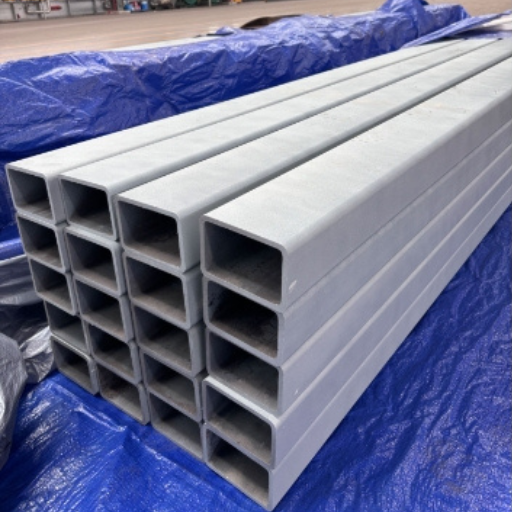
There is no denying that steel still holds the title of the most essential material in modern infrastructure and industry; however, its quality varies. High-strength seamless steel pipes are a mainstay of sectors such as construction, automotive, energy, and aerospace. Their special features, including high strength, reliability, and a wide range of applications, enable them to withstand the most demanding conditions where performance quality is the top priority. The article discusses high-strength seamless steel pipes, what makes them different, their main advantages, and the wide range of options available in industries. No matter if you are an expert in the field or just want to know how engineering can work wonders, learn about the pipes that are essential in affecting the future and technology.
Definition and Characteristics of Seamless Steel Pipe
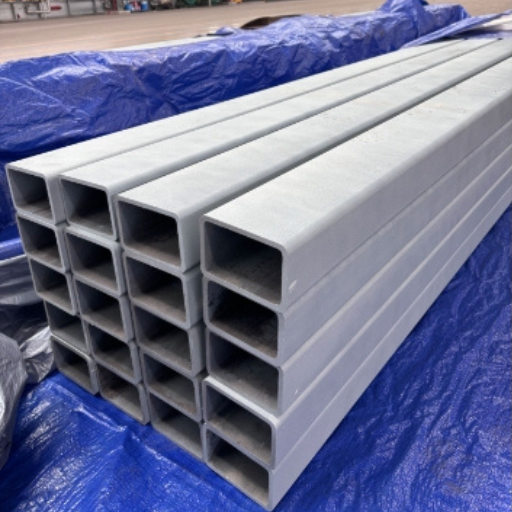
Seamless steel pipes are circular steel items produced with no welded joints. Their non-welded construction enhances their strength, durability, and consistency, making them much more reliable under pressure than welded pipes. They are made by pushing solid steel billets through a round die, which yields a pipe with a very smooth surface and a uniformly textured structure. Resistance to rust, extreme pressure and temperature is among the factors that rank seamless steel pipes high in performance in the most demanding applications. These features make seamless steel pipes indispensable in sectors such as construction, oil and gas, and power generation.
What are High Strength Seamless Steel Pipes?
High-strength seamless steel pipes are excellent tubular products designed to be very strong, pressure-resistant, and highly durable, but they are still not very common in the market. It is the aerospace, automotive, and energy industries that need these pipes for critical applications.
Unique Properties and Advantages
Excellent Strength-to-Weight Ratio
The high-strength seamless steel pipes have an amazing strength-to-weight ratio, and thus these pipes are good candidates for super-performance applications. Their lightweight combined with the excellent mechanical properties guarantees efficient and reliable performance in extreme conditions.
Resistance to Corrosion
These pipes are made to survive in tough conditions and they give excellent resistance to corrosion due to the moisture, chemicals, and high temperatures, so they last longer.
High-pressure and Temperature Capacity
These pipes, designed for critical applications, can withstand high pressure and temperature, ensuring safe and efficient operation in the oil, gas, and power generation industries.
Dimensional accuracy
Seamless steel pipes, being manufactured without seams or welds, get impeccable dimensional accuracy. This precision is advantageous for the compatibility and performance of applications that require tight tolerances.
Fatigue Resistance Upgradation
The advanced metallurgy, along with the seamless construction of these pipes, enhances their resistance to cyclic stresses, thereby reducing fatigue failures and ensuring long-term operational reliability in demanding applications.
Manufacturing Process of Seamless Steel Pipe
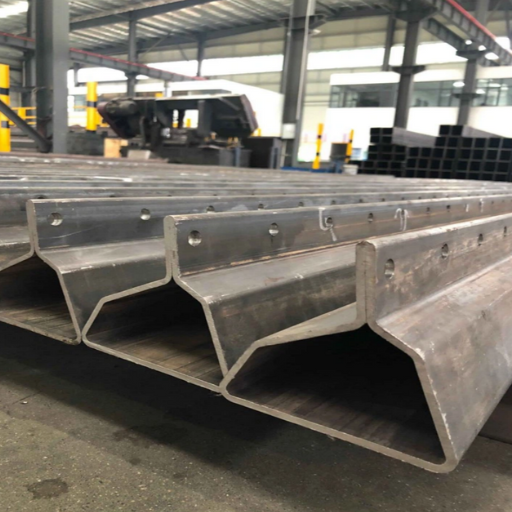
The technique for creating seamless steel pipes is very complex and requires following a sequence of precise steps to achieve the right size, quality, and mechanical characteristics. Here is the description of the chief stages:
Choosing Raw Material
Solid round billets of the best steel are the primary materials used to make seamless steel pipes. The billets, made from iron ores or scrap steel, undergo strict metallurgical standards that ensure the metals possess the desired physical and mechanical properties.
Heating and Piercing
Initially, the steel billet is heated in either a rotary hearth or an induction furnace at 1,200 to 1,300°C. After getting really hot, the billet is taken to a piercing mill where it is subjected to rotary piercing. This method uses two rotating rolls that turn in the same direction to push the billet through and form a hollow shell. The last operation is crucial for forming the pipe's first cavity.
Elongation Process
After piercing, the hollow shell is fed into an elongator or a mandrel-rolling mill. The wall thickness of the pipe is reduced and the diameter is changed according to the production specifications. This creates a long, uniform pipe that meets the dimensional tolerances.
Heat Treatment
The pipe undergoes different heat treatment processes depending on its end use. Treatments such as normalizing, annealing, quenching, and tempering are used to improve the material's strength, ductility, and corrosion resistance.
Sizing and Shaping
The pipe is then sent through the sizing or reducing mill to meet outer diameter and wall thickness requirements. The process provides extremely tight tolerances, making the product suitable for high-precision applications.
Non-Destructive Testing (NDT)
Pipes that are finished undergo rigorous testing to assess quality and reliability. Ultrasonic testing, magnetic particle inspection, and eddy current testing are methods that detect defects inside or outside. Only perfect products are allowed to move to the next stage.
Cutting and Finishing
The pipe is cut to specific lengths that meet customer requirements. In addition, the functionality of the pipe may be improved and its corrosion resistance enhanced by applying additional finishing processes, such as threading, beveling, or coating, especially in the oil and gas industry.
Final Inspection and Packaging
An exhaustive final inspection is performed to check that the dimensions, surface quality, and mechanical properties conform to international standards (ASTM, ASME, or API). The pipes are then packed so they are protected against damage during transport.
Applications and Market Growth
Recent market research states that the global seamless steel pipe market was worth around USD 70 billion in 2022 and it is likely to expand at a compound annual growth rate (CAGR) of 5.8% throughout the period of 2023 to 2030. The main factors for this growth include the increasing demand from the oil & gas, construction, automotive, and infrastructure development sectors. On the other hand, production efficiency and quality assurance have been further accelerated by introducing modern techniques such as precision-rolling technology and automated inspection systems.
Overview of Seamless Steel Pipe Manufacturing
The production of seamless steel pipe is a complex process but it results in pipes having a continuous and uniform structure without the need for any welding. While welded pipes are made in several layers, seamless pipes are made from a single piece of steel which is first heated and then pierced to obtain a hollow tube. This improves the pipes' overall quality and pressure resistance, making them essential in industries like oil and gas, where uniformity and reliability are imperative.
The whole operation starts with the careful choice of the highest quality raw materials like carbon steel and high alloy steel billets. The billets are then placed in a rotary hearth furnace and heated to more than 2,200°F (1,200°C). Then the heated billet is sent to a piercing mill, where it receives a hollow shell shape. After this, the shell goes to elongation which can be done by mandrel rolling or plug rolling to get the required diameter and wall thickness. The pipes then undergo a series of finishing processes, including heat treatment, straightening, cutting, and quality control checks, before they are released for sale. These processes are carried out to ensure that the final product meets stringent industry standards, such as ASTM and API specifications.
The seamless steel pipe market is growing steadily, driven by technological advancements and demand from various industries. One perfect example of this is the case of oil and gas industry, where seamless pipes are necessary for drilling, transport, and refinery processes mainly because they can support the required pressure and resist corrosion at the same time. According to the latest statistics, the seamless steel pipe business is going to expand so the sales volume in 2030 is estimated to be around USD 114 billion, which will be a result of the excellent annual growth rate of 5% to 6%. The introduction of new processes, such as continuous rolling and non-destructive testing, not only increases production capacity but also guarantees the best quality for the most demanding applications.
The precision, durability, and reliability of seamless steel pipes make them cornerstones of up-to-date infrastructure and critical industry support.
Advanced Techniques in Production
Continuous Casting and Rolling
The continuous casting and rolling processes have entirely transformed the manufacturing of seamless steel pipes. By allowing continuous forming and shaping, these methods not only reduce material loss but also greatly increase production efficiency. This method also reduces production costs while maintaining high precision.
Non-Destructive Testing (NDT)
Nondestructive testing is a requirement that cannot be skipped when producing high-quality seamless steel pipes. The use of state-of-the-art techniques such as ultrasonic testing, magnetic particle inspection, and radiographic testing will ensure that any internal or external defects are detected and that the pipes are reliable and safe for high-stress applications.
Heat Treatment Technologies
An example of a modern heat treatment process is the combination of annealing, quenching, and tempering that makes seamless steel pipes stronger, tougher, and more resistant to wear and corrosion, thus making them very appropriate for the harshest of conditions, such as very high and low temperatures and very high pressures.
Hot Extrusion Process
The hot extrusion process is a revolutionary technique that has opened up new avenues for producing top-quality seamless pipes with exact dimensions and superb surface texture. The hot extrusion process is of utmost importance for the fabrication of pipes with intricate shapes and for blending materials with specific properties for industry.
Automated Inspection and Sorting Systems
The enhancement of automation and artificial intelligence, in conjunction with advanced inspection and sorting systems, is the key to assessing the quality of pipes and categorizing them effectively. High-definition imaging and real-time data analysis are the core of these systems’ precision, consistency, and compliance with standards.
All these cutting-edge technologies together add up to the longevity, accuracy, and productivity needed for seamless steel pipe manufacture, ensuring it aligns with the ever-changing requirements of infrastructure and industrial use.
Applications and Benefits of High-Strength Seamless Steel Pipe
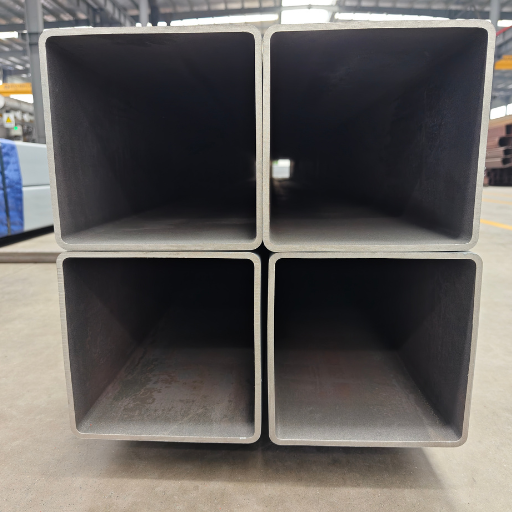
High-strength seamless steel pipes are indispensable in various applications due to their versatility, durability, and performance in critical applications. Here, we discuss five applications and benefits along with their descriptions:
Oil and Gas Industry
Seamless steel pipes play a major role in the oil and gas industry, where they are used in drilling, production, and transport. Their superior resistance to pressure and corrosion make them suitable for long-distance pipelines that transport crude oil, natural gas, and refined products.
Construction and Infrastructure
These pipes are used in the construction of the structural skeletons of buildings and monumental structures, thanks to their high capacity and non-deforming behavior under stress. Their application significantly raises the bar of safety and longevity concerning the infrastructure.
Power Generation
High-strength seamless steel pipes are used in thermal, nuclear, and renewable energy facilities. They are widely used in boilers and heat exchangers due to their ability to maintain integrity under extreme temperature and pressure conditions.
Automotive and Aerospace Industries
The entire production process for cars and planes includes seamless steel pipes used in the construction of parts such as suspension, fuel, and hydraulic systems. Being strong yet light enables enhanced fuel efficiency and safety in those sectors.
Industrial Equipment Manufacturing
Seamless pipes are an integral part of the production line for heavy industrial machinery and equipment. Their accuracy, durability, and resistance to wear and tear ensure optimal performance, even in harsh working conditions.
Through these applications, the high-strength seamless steel pipes prove their worth as a vital element of modern industrial and infrastructure development, serving as a bearer of efficiency and reliability.
Industries Utilizing Seamless Steel Pipes
Seamless steel pipes have gained a wide acceptance in various industries owing to their unmatched strength, durability and being able to endure extreme conditions. A brief overview of the five most important industries that practically use the steel pipes without seams is given below:
Oil and Gas Industry
The application of seamless steel tubes is very high in the oil and gas industries as they are used in the exploration, production and transportation process. They are required for drilling activities, for transporting oil and gas, and for building the necessary facilities, such as refineries and rigs. Their high-pressure and corrosion-resistant features make them an inseparable part of this industry.
Construction and Infrastructure
Pipes without seams offer significant benefits to the construction and infrastructure sectors by supporting steel structures and being used in building framing, bridges, and factories. The high load-bearing capacity of seamless pipes guarantees the project's safety and durability.
Automotive Industry
The making of automotive components like axles, steering systems and exhaust pipes is done using seamless steel pipes. In addition, their exact engineering aids performance and safety in vehicles.
Power Generation
Seamless steel pipes are applied in the power generation industry for use in boilers, turbines and heat exchangers by virtue of their ability to bear high temperatures and pressures. The reliable functioning of both conventional and green power plants depends on this aspect.
Chemical Processing Industry
Seamless steel pipes are very important in the chemical industry, as they are used to transport acids and hot fluids. Their resistance to chemical reactions and long life in harsh environments make them the first choice in this industry.
The industries mentioned above show the impressive and crucial role seamless steel pipes as a guarantee of efficiency, safety and sustainability across a wide range of uses.
Durability and Efficiency Benefits
Seamless steel pipes have been gaining popularity and are considered the best option for various industries, thanks to their numerous advantages in terms of durability and efficiency. The following five points summarize the main benefits:
High Pressure Resistance
Seamless steel pipes can withstand very high pressure without cracking or leaking, making them the safest pipes for oil and gas pipelines, which are considered critical applications.
Enhanced Corrosion Resistance
Corrosion has no chance against these pipes, which is why they can be used even in the most aggressive corrosive environments; thus, maintenance costs are mainly eliminated.
Improved Flow Efficiency
Due to the seamless steel pipes having a very smooth interior surface, there is less friction and therefore, energy losses are minimized, as fluids and gases flow more efficiently.
Exceptional Strength and Durability
The superior mechanical strength and the long-life of the seamless pipes made from a single continuous piece of steel are guaranteed even under the most extreme loads.
Extended Lifespan
The strong construction and resistance to wear and tear of these pipes result in a longer operational period, thereby reducing replacement frequency and improving cost-efficiency.
These advantages explain the reason for the continuous use of seamless steel pipes in demanding applications which, in turn, helps in maintaining both performance and trustworthiness.
Market Trends and Innovations in Steel Tubing
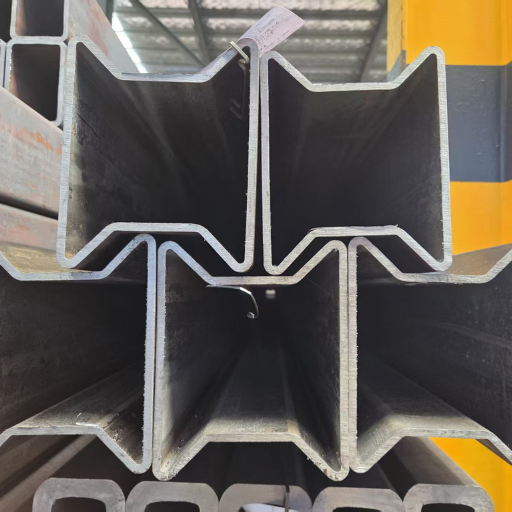
The steel tubing market is on the rise due to the increasing demand from the construction, automotive, and energy industries. Lightweight, high-strength steel tubing is increasingly preferred for its efficiency and longevity. The new processes coming up are 3D printing and laser welding, which make production more accurate and reduce material waste. Besides, some environmentally friendly practices, such as the creation of recyclable materials and the use of energy-efficient production methods, are now part of the industry's strategies. The trends mentioned above show that the industry is very much concerned about quality, prices, and the environment.
Current Market Trends in Seamless Steel Pipe
Rising Demand in the Oil and Gas Sector
The oil and gas sector has largely driven the growing demand for seamless steel pipes worldwide. The need for seamless pipes is high in offshore and unconventional oil fields, where exploration and production are ongoing, particularly for applications requiring high pressure and temperature.
Surge in Infrastructure Development Projects
Global infrastructure projects have been increasing due to rapid urbanization and industrialization. Seamless steel pipes are widely incorporated into the construction and structural aspects of the project, which is one of the reasons for the enduring growth of this market segment.
Adoption of Advanced Pipe Coating Technologies
Advanced technologies for seamless steel pipes are major contributors to their corrosion resistance and longevity. Such innovations are being developed for the petroleum, chemical, and wastewater management industries, where pipes are subjected to harsh conditions.
Expansion of Renewable Energy Applications
Seamless steel pipes will become increasingly common in renewable energy sectors, such as geothermal and wind farms. These pipes are highly durable and can withstand even the most extreme conditions, making them well-suited for the production of sustainable energy at these sites.
Shift Towards Lightweight and High-Strength Materials
The creation of lightweight yet strong steel materials is opening up new market possibilities. The industries are thus pursuing efficiency and lower material costs while still delivering quality, which is a remarkable feature of this trend.
The above-mentioned market trends indicate that seamless steel pipes are becoming increasingly complex and diverse in their use across various industries.
Technological Advancements in Manufacturing
The last few years have seen significant changes in modern machinery, enabling the seamless production of steel pipes and resulting in higher-quality products. One such innovation is the implementation of automation and robotics in the production process. Production through automated systems is less costly, it reduces human error, and consistently controls quality as through the use of human workers. The robotic hands, for instance, carry out tasks accurately and repetitively, as with the cases of heat treatment and surface inspections, much faster than conventional means in the case of robotic arms in the factory.
Among the breakthroughs is also the application of artificial intelligence (AI) and machine learning (ML) for prescriptive maintenance and procuring efficiency. AI algorithms do the heavy lifting of analyzing tons of production-line sensor data and can pinpoint patterns indicating future equipment breakdowns even before they occur. Recently published studies have shown that companies employing predictive maintenance have cut the time machines are not operational by as much as 30%. This change, driven by increased operational efficiency, is really great.
In the case of 3D printing technology, it is already in the early stages of widespread adoption, allowing manufacturers to prototype and design complex objects at a lower cost and in a shorter time. This same technology provides a quicker turnaround and, hence, a more user-friendly design and manufacturing, as well as improvements across the entire production process for some types of components.
Moreover, energy-saving production methods are now very much in the limelight, mainly because of the worldwide demand for sustainability. One of the examples is that modern electric arc furnaces are already responsible for producing over 30% of energy saving when compared to the conventional blast furnaces, steel production and also maintaining a constantly very low carbon emissions through scrap steel recycling in these furnaces, which is again one of the industry's respective goal, hence, meeting the demand for sustainability from the global community.
Technological progress of this caliber is a stronghold of automation, AI, energy-efficient practices, and innovation tools and is shaping the whole steel pipe industry, thus making it with finer quality, lesser cost, and even smaller environmental footprint.
Tags: High Strength Seamless Steel Pipe


